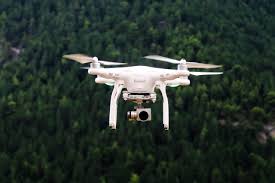In an era marked by environmental challenges and biodiversity loss, the integration of artificial intelligence (AI) technologies has emerged as a game-changer in the field of conservation. From wildlife monitoring to habitat restoration, AI offers a wide array of innovative solutions that enhance conservation efforts, empower conservationists, and safeguard the natural world for future generations. This article explores the diverse applications of AI in conservation, highlighting how technology is revolutionizing the way we protect wildlife, preserve ecosystems, and combat environmental threats.

Wildlife Monitoring: Eyes in the Sky and the Sea
AI-powered drones, cameras, and sensors have transformed wildlife monitoring by providing real-time data on animal populations, behavior, and habitat use. Machine learning algorithms analyze vast amounts of imagery and footage to track endangered species, detect poaching activities, and monitor migration patterns. With AI, conservationists can gather crucial insights into wildlife populations, identify conservation priorities, and implement targeted interventions to protect vulnerable species from extinction.
Habitat Restoration: Rejuvenating Ecosystems with Precision
AI algorithms are being employed to optimize habitat restoration efforts by analyzing ecological data, predicting ecosystem dynamics, and identifying areas in need of conservation action. From reforestation projects to wetland restoration initiatives, AI helps conservationists prioritize restoration activities, enhance biodiversity, and mitigate the impacts of habitat degradation and climate change. By harnessing the power of AI, conservationists can make informed decisions that result in more effective and sustainable ecosystem restoration outcomes.
Anti-Poaching and Illegal Activity Detection: A Virtual Watchdog for Wildlife
AI technology plays a crucial role in combating poaching, illegal logging, and other environmental crimes that threaten wildlife and ecosystems. AI-enabled systems can analyze sensor data, acoustic signals, and satellite imagery to detect suspicious activities in protected areas, alerting authorities to potential threats in real time. By deploying AI-powered anti-poaching tools, conservationists can significantly reduce wildlife crime, safeguard endangered species, and enhance security measures in critical conservation areas.

Species Conservation: From Data to Action
AI algorithms are revolutionizing species conservation efforts by processing vast amounts of biological data, genetic information, and ecological parameters to develop conservation strategies tailored to specific species’ needs. By analyzing genetic diversity, population trends, and habitat requirements, AI can help conservationists design effective species recovery plans, reintroduction programs, and genetic management strategies that promote the long-term survival of endangered species and prevent genetic bottlenecks.
Climate Change Adaptation: Forecasting the Future of Conservation

AI-powered climate modeling and predictive analytics are invaluable tools for conservationists seeking to understand and address the impacts of climate change on biodiversity and ecosystems. By analyzing climate data, ecosystem responses, and species distribution patterns, AI can predict how environmental changes will affect wildlife populations, habitat suitability, and conservation priorities. This foresight enables conservationists to develop adaptive strategies, implement resilience measures, and mitigate the effects of climate change on vulnerable species and ecosystems.
Conclusion: A New Frontier for Conservation Innovation
As we witness the transformative impact of AI on conservation practices, we enter a new era of innovation, collaboration, and sustainability in the fight to protect wildlife and preserve ecosystems. By harnessing the power of AI for wildlife monitoring, habitat restoration, anti-poaching efforts, species conservation, and climate change adaptation, conservationists are equipped with powerful tools that amplify their impact, enhance their efficiency, and advance their mission to safeguard the natural world. As we embrace the potential of AI in conservation, we embark on a journey toward a future where technology and tradition converge to create a world where wildlife thrives, ecosystems flourish, and humanity coexists harmoniously with the natural world.




